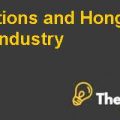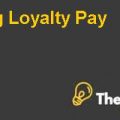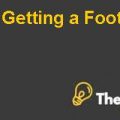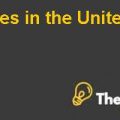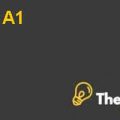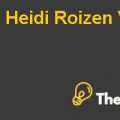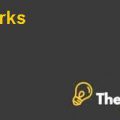Brav et al Case Case Study Solution
About investment decisions, share repurchases and dividends, it has been found by the authors that the level of the dividend payout are decided immediately prior to or at the exact time of investment decision. It is imperative to note that the payout decisions are firstly made, then the share repurchases decisions are taken. In terms of priorities, the responses of the survey has indicated that the projects with the positive net present value (NPV) would be referred by executives before lowering the dividends.
In addition to this, the proportion of executives at dividend paying organization is 65 percent which would be raising new funds for the purpose of financing the profitable and lucrative projects and in response to reduce the payout. At repurchasing companies, there are only 16 percent of executives who have agreed to raise funds for the profitable and lucrative projects in response to the reducing stock buyback. The stock repurchases and the dividends are not considered as interchangeable. At the dividend paying companies, there are more managers who most likely prefer to pay down debt for the purpose of increasing the stock buyback.
Considering how the payout ratios as well as the payout policies have been influenced by the fifty years of history, it has been found by the authors that still the decisions are made in a conservative way, but the relative significance to maintain the targeted payout ratio has reduced.For repurchasing shares, the levels of repurchases frequently changes while there is lack of evidence in respect to the repurchase ratio.
The historical standpoint shows that in case the organization has been experiencing the reduction in the earnings, the managers are supposed to divest assets and defer those projects which shows positive or greater than zero net present value (NPV) as compared to reducing the rate of dividend. In prior time period, the companies choose to cut the dividend rate in order to reflect the business conditions. There is a greater asymmetrical difference between increasing and reducing dividends, with the company’s managers who believe that the little reward to dividend increase than to penalties for reduction.
It is to notify that the tax rate on dividends have reduced at the time of conducting the survey, but there were only 28 percent of chief financial officers (CFOs) who stated that their companies would be able to increase the dividends due to the tax cuts. Regarding those organizations that haven’t been paying dividends currently; there were only 13 percent companies which showed that in response to the tax reduction they would be paying dividends. Related to the clientele affect, the results concluded from the survey shows that the dividends have greater and relative significance to retail instead of institutional investors.
The results also showed that executives paying dividends in companies believe that for the board; the payout policies are not an effective way to impose the discipline on company’s management. It has been indicated by nearly 75 percent of respondents that one of the significantly important consideration for the stock buyback decision is increasing the earnings per share (EPS). Often, it is to highlight that the decision to repurchase shares from the market are enacted for offsetting the earnings declined generated by stock purchase plan or employee stock option compensation.
It is stipulated that the companies which are neither repurchasing stock from the market nor paying dividends currently, it is indicated by the managers that they would most likely initiate the dividend in case it is demanded by the institutional investors or if they have a rapid profit increase. In addition to this, the managers would also buyback stock from the market if they believe that their share would be undervalued, and a shortage of investment opportunities in the market would be persisted. The inflexibility is one of the considerable reason for not initiating a dividend.
Shortly, 384 financial executive have been surveyed and in-depth interviews are conducted with an additional 23, in order to evaluate the multiple factors that are responsible to drive the share repurchase and dividend oriented decisions. The findings demonstrate that to maintain the level of dividend on the par with the investment decision, whereas repurchasing of shares from the market are made out of the residual cash flows after spending on investment.
The perceived future earnings stability still impact the dividend policy. Though, 50 years later, it is found that the relationship between the earnings and the dividends has weakened. There are many managers from the organization who have favored the repurchases of shares from the market due to the fact that they believe the repurchasing of shares is comparatively more flexible than the dividends, also it could be used in making an effort to increase the earnings per share as well as time the equity market.
It is believed that the institutions are indifferent between repurchases of shares and dividends and there is a little impact of the payout policies on the investor clientele. Generally, the views of the management provides little support for the signaling, agency and clientele hypothesis for the dividend payout policy.
In addition to this, the summary of the research is as follows;
- Investor hold dividend in high regard
- Disapproves Modigliani and Miller (MM) theory of the capital structure
- Disapproves the payout ratio and
- Confirms the findings of Lintner on conservatism
- The preferences of the managers from reputable organization has shifted from dividend to repurchase of stock from the market.
In the Hedge Fund Activism, Corporate Governance and Firm Performance article, it has been found that the targeted companies (companies that have been chosen to conduct the research) believe that they are undervalued based on their comparison of its market value and book value. These companies who have lower market value relative to their book value are enjoying more profitability with sound operating cash flows and return on assets and equity. While it has been found that the payout ratio of these companies are lower as compared to the matched sample and comparable size companies which indicates the potential agency problems that requires more takeover and defensive strategies ultimately the higher offering to its chief executive officer (CEO). Furthermore, the target companies offer higher pay to Chief Executive Officer (CEO) as compared to the companies of book to market ratio and comparable size.
For the purpose of clearly understanding the limitations of the activism that have been widely used in the research paper, are the three activist events categories which have been described and discussed below and also used in the surveyed data..........
This is just a sample partical work. Please place the order on the website to get your own originally done case solution.

